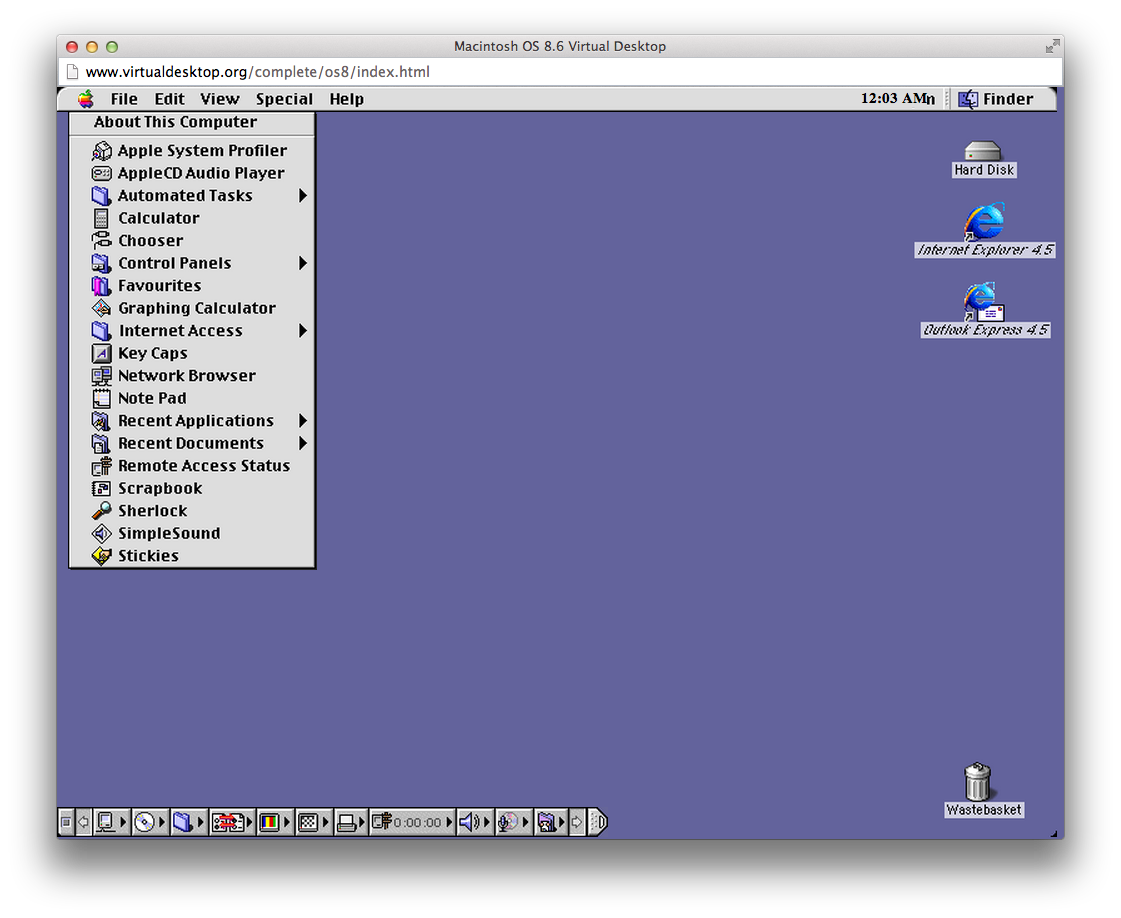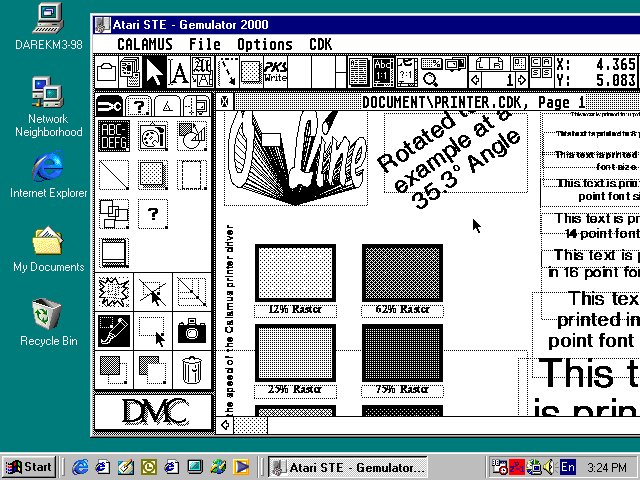



#1995 MAC EMULATOR MAC OS#
The basic idea for Copland was to run the Mac OS on top of a microkernel. Soon word was out that Apple was working on a new system known as Copland, to be followed by an even more advanced system known as Gershwin.
#1995 MAC EMULATOR SOFTWARE#
With System 7.5 released in the autumn of 1994, Apple management finally decided that the decade-old Macintosh system software ( Mac OS) had run its course, and an entirely new operating system, with more advanced features, would be needed for the platform to compete with upcoming releases of Microsoft Windows. Several projects made significant progress, only to be ended personally by Sculley after some other department manager complained and Sculley ended the feud by cancelling both.

John Sculley, Apple's CEO during this period, largely ignored managing of the company itself while he concentrated on sales and marketing, and as a result the engineering departments were essentially out of control. Several attempts were made by various teams to address these issues and start work on an updated system, but invariably they ran afoul of internal politics and turf wars. A path forward was no longer simple, as users would be unwilling to give up on features to get there.
#1995 MAC EMULATOR INSTALL#
System 7 would have been an opportune time to address some of the "low level" problems in the Mac OS, but instead consisted of a huge set of "bells and whistles." With the previous System 6 at only 500k or so it may have been possible to run several "virtual Macs" to provide robust multitasking, but a basic System 7 install took well over 1MB of RAM in an era where 2MB was common and 4MB was the most the majority of the Mac line could handle. In particular the architecture of QuickDraw made it very difficult to introduce multitasking into the system, and the file system was particularly inefficient when used on hard drives. Originally intended to support a single user running a single application on a non-networked machine with a floppy disk for storage, many parts of the operating system simply did not "scale" well. Eventually Apple semi-abandoned it by spinning it off to form Taligent. The blue team delivered what became known as System 7 only slightly late in 1991, but Pink suffered from second-system effect and continued to slip into the indefinite future. Ideas that seemed simple enough to implement in the short term, like adding color to the user interface, were written on blue cards, while more advanced ideas, like an object-oriented file system were written on pink cards.ĭevelopment of the ideas contained on both sets of cards was to proceed in parallel, the team working on blue releasing an updated Mac OS in the 1990-91 time frame, and pink an entirely new OS around 1993. Ideas were tossed out at random, and written down on index cards for storing. In 1989, mid-level managers at Apple sat down and planned the future course of Mac OS development.


 0 kommentar(er)
0 kommentar(er)
